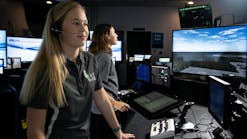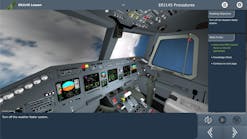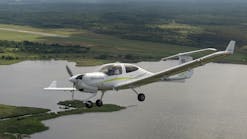Civil Air Patrol Contributes to Super Bowl Safety
Civil Air Patrol is participating for the 22nd straight year in an exercise to help the U.S. Air Force ensure the safety and security of airspace around SoFi Stadium in Inglewood, California, and Super Bowl LVI, set for Feb. 13.
To help train Air Force fighter aircrews and maintain their proficiency, Civil Air Patrol flies its aircraft into simulated restricted airspace, playing the role of a trespassing aircraft as the Air Force jet crews practice intercept techniques. The Air Force pilots fly alongside the CAP plane, make radio contact, and guide it out of the restricted airspace.
These training flights are scheduled to occur between Feb. 7 and Feb. 10.
CAP is involved in similar exercises around the U.S. throughout the year to test aerospace security. The exercises, known as Falcon Hawk, are carried out as part of Operation Noble Eagle, launched by First Air Force/Continental U.S. NORAD Region (CONR) after the Sept. 11, 2001, terror attacks. Along with CONR’s Western Air Defense Sector and CAP, the exercises are conducted in coordination with the Federal Aviation Administration and U.S. Customs and Border Protection.
In typical training exercises, two Civil Air Patrol single-engine planes fly as intercept targets for the Air National Guard fighter jets. CAP’s “low and slow” aircraft are considered ideal targets for these exercises. A third CAP aircraft, known as a “high bird,” flies as a communications hub coordinating radio traffic from participants on the ground and in the air.
“Our Air Force auxiliary, CAP, comprised mostly of volunteers, is a national treasure. They continue to make significant contributions day in and day out to include their work in support of this national sporting event,” said Air Force Lt. Gen. Kirk Pierce, commander, CONR – First Air Force. “Be it educational CAP static aircraft displays or defense-training flights, the team is excitedly preparing for America’s Game.”
The Federal Aviation Administration routinely implements Temporary Flight Restrictions around major events like the Super Bowl, VIP flights, and major disasters. Airspace around these TFR areas is restricted from all general aviation traffic for a specific radius to ensure no aircraft enter. The TFR is enforced by the Air Force, which has fighter aircraft patrolling the area during the time of the restriction.
CAP’s California Wing will display one of its aircraft Feb. 9 at March Air Reserve Base in Riverside alongside other aircraft being used in the Super Bowl exercise. Although the Air Force is not offering media flights before Super Bowl LVI because of the COVID-19 pandemic, the briefing is being held to highlight the joint training missions and the flights’ importance.
Aircraft slated to be on display include 144th Fighter Wing F-15C, 144th FW Detachment 1 F-16, 452nd Air Mobility Wing KC-135 Stratotanker, Customs and Border Protection Pilatus PC-12, and CAP Cessna-182.
Acting as a Total Force partner as the Air Force auxiliary, Civil Air Patrol is aligned with First Air Force to rapidly respond to nonmilitary threats domestically when tasked in a Defense Support of Civil Authorities capacity to save lives, relieve suffering, prevent property damage, and provide humanitarian assistance.
About Civil Air Patrol
Established in 1941, Civil Air Patrol is the official auxiliary of the U.S. Air Force and as such is a member of its Total Force. In its auxiliary role, CAP operates a fleet of 555 single-engine aircraft and 2,250 small Unmanned Aircraft Systems (sUAS) and performs about 90% of all search and rescue operations within the contiguous United States as tasked by the Air Force Rescue Coordination Center. Often using innovative cellphone forensics and radar analysis software, CAP was credited by the AFRCC with saving 108 lives last year. CAP’s 56,000 members also perform homeland security, disaster relief and drug interdiction missions at the request of federal, state and local agencies. As a nonprofit organization, CAP plays a leading role in aerospace education using national academic standards-based STEM (science, technology, engineering and math) education. Members also serve as mentors to over 23,000 young people participating in CAP’s Cadet Programs.





